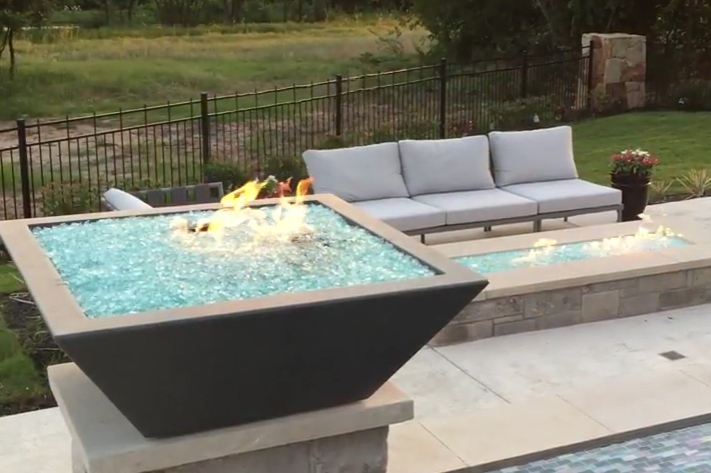Outdoor Living, Fire Features, Amenities & Lighting
With increasing frequency, I'm running into higher-end clients who lead hectic 9-to-5 lives - too packed for them to be able to enjoy the swimming pool we're proposing to build with much more than holiday-weekend frequency. Obviously, the key with these homeowners is making certain the pool we're discussing is something they can appreciate and enjoy 24 hours a day - whenever they happen to be home and can be drawn out into a
This article concludes a little series I've been doing that feature bowls in association with my pool and spa designs. The first two were about water bowls in very different applications. This one is about fire bowls and, in greater detail, about materials you can put in them to cover the burners, disperse the flames and make them look good even when
There's a common misperception among designers and builders whose projects carry them beyond a pool and spa and out into the landscape: In large numbers, these professionals believe that low-voltage landscape lighting systems are perfectly safe for use in close proximity to the water. The truth of the matter is that the National Electric Code (NEC) has defined an exclusionary zone of ten feet around pools and spas for these fixtures! That's right: Even with low-voltage
The arrival of Dasher and Blitzen is just around the corner, and it’s a certainty that once they’ve landed on your rooftop (with such a clatter, I’m sure), they’ll cast hungry eyes on the plants arranged in the gardens below. Remember: Santa will be
When I want to work real magic into my designs, I play with fire – and do my best to find extraordinary ways to combine fire with water to express the full, captivating power of both of these natural elements. Picture flames dancing across the reflective stillness of a pool; or visualize them alongside an inviting walkway that leads you
As I see it, successful landscape lighting is a two-part process: First, the designer applies aesthetic principles that create the art, then he or she supports that artistic vision with scientific and technological savvy. One without the other doesn’t work: You can’t effectively practice the art until
As I mentioned in the first of this series of articles, I initially became involved with the art of concealment when a client showed me an interior room’s lighting system that was activated by touching a kickplate hidden in the floor moldings. It was one of the coolest things I’d ever seen (or not seen) and set me off on a career-long pursuit of
There are all sorts of amenities associated with outdoor living that, taken together, conspire to create what I see as undesirable visual clutter. This is why, when I approach any backyard project, I take my time in sizing up my clients and doing all I can to figure out how they’ll be using the space. If it’s to be an active, family-oriented play/recreational space, for example, I’ll start thinking about






















